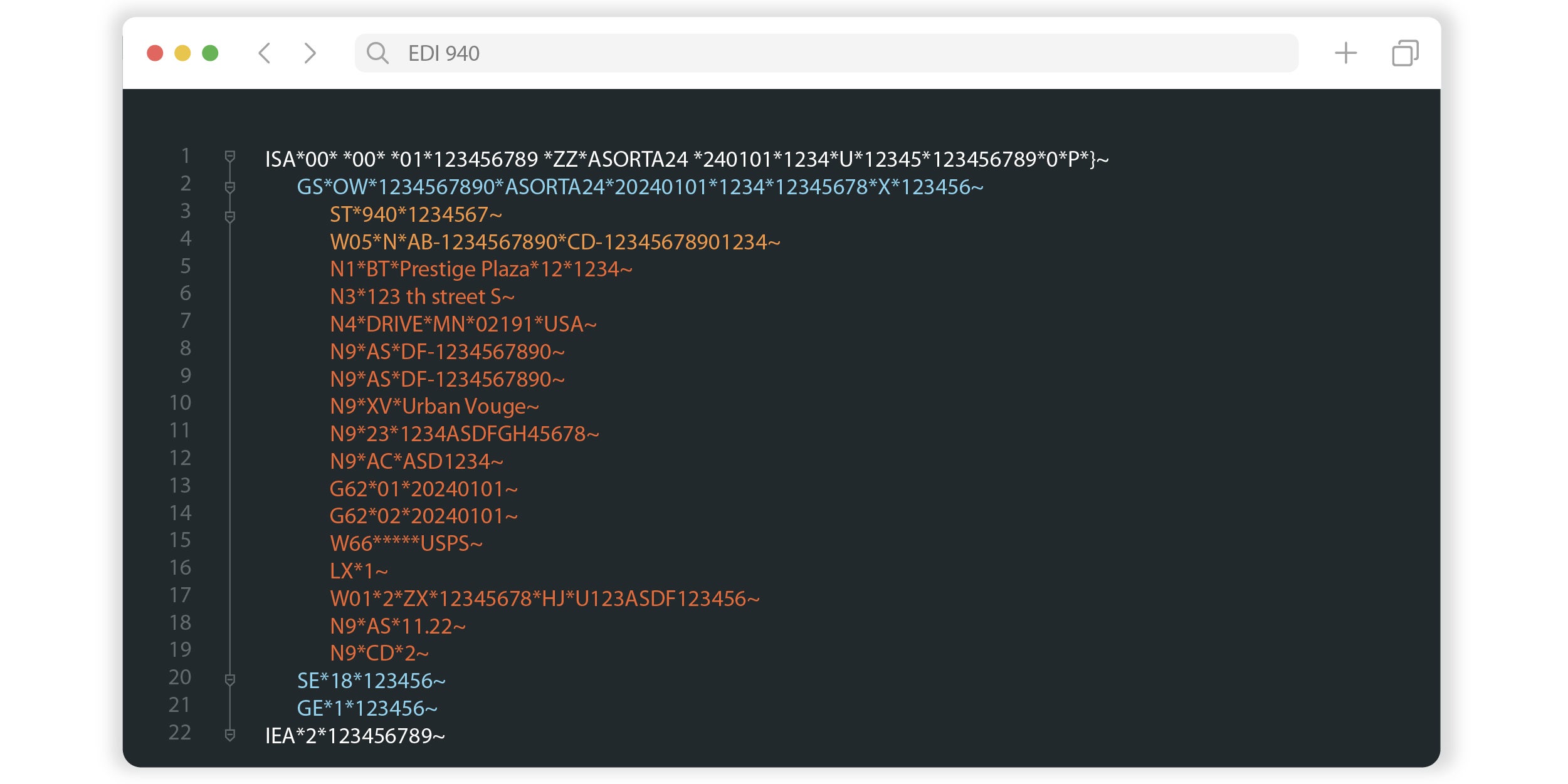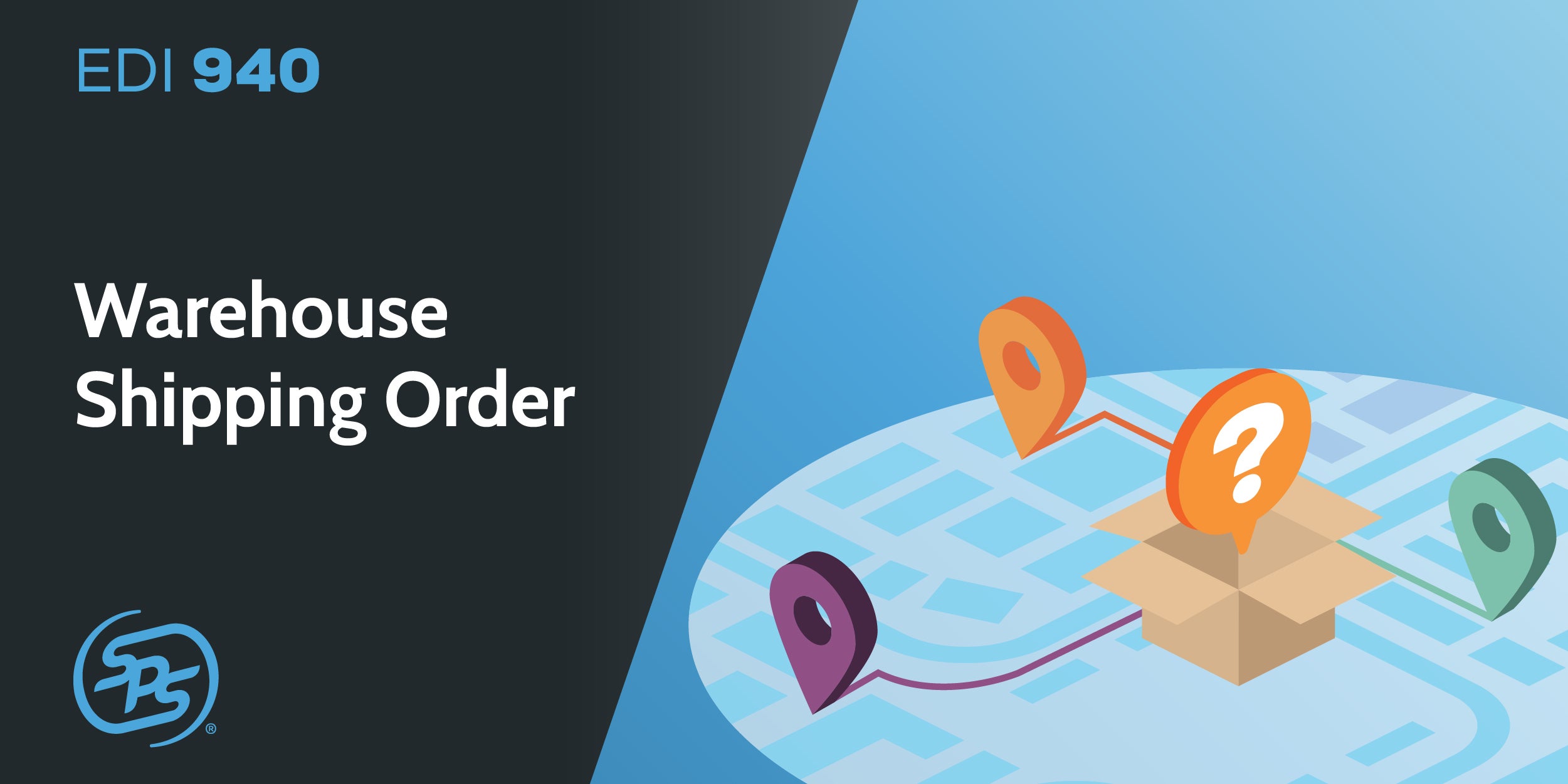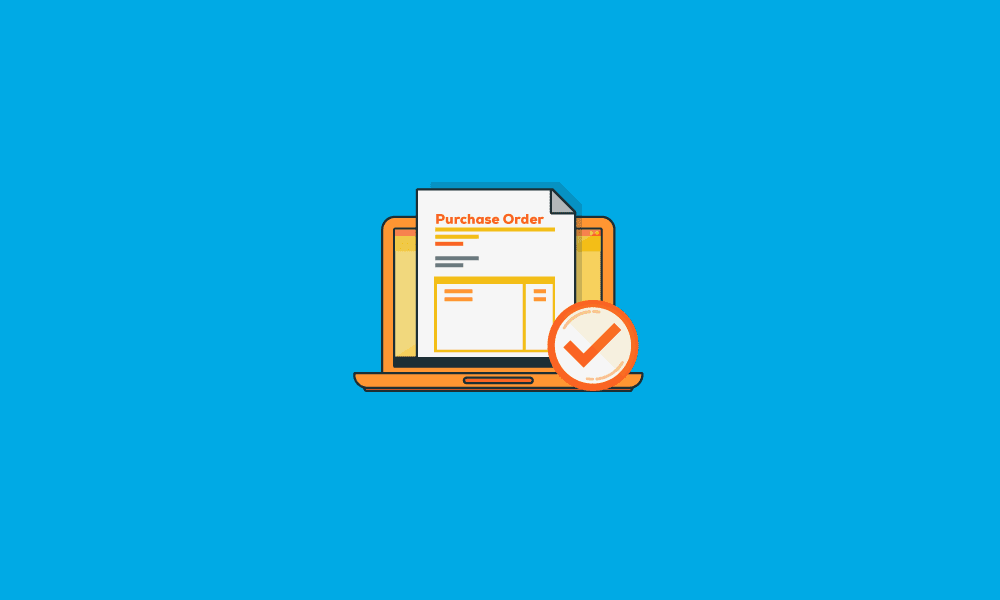EDI 940 format
The EDI 940 serves a crucial role in the ordering and distribution process. This document contains detailed instructions on what items need to be shipped, the quantities of each item, where the items should be shipped (ship-to address) and when the shipment should occur.

The core elements of an EDI 940 typically include:
REF: Purchase order number
N1: Ship-to-address
W01: Warehouse order details
PER: Receiver contact information
NTE: Shipping instructions
W66: Special equipment requirements
How is the EDI 940 used?
The EDI 940 is critical in facilitating smooth and efficient communication between companies and their warehouses or fulfillment centers, contributing to a more effective and responsive supply chain.
Here’s how it typically works:
1. Order placement and EDI 940 generation:
When an order is processed in the seller’s system, a warehouse or fulfillment center is automatically assigned to the order based on inventory levels and item location. The seller then generates an EDI 940 document for the order, which includes the items that need to be shipped, quantities, delivery location and instructions and date of shipment.
2. The EDI 940 is sent to the warehouse:
The EDI 940 is electronically sent to the designated warehouse or fulfillment center. This is done through an EDI network between the seller and warehouse systems. The process is automated, ensuring quick and error-free transmission of data.
3. The warehouse processes the order:
Upon receiving the EDI 940, the warehouse management system (WMS) automatically processes the shipping order. Warehouse staff are directed to pick the specified items from the inventory, pack them according to the instructions, and prepare them for shipment.
4. Order shipment and confirmation:
After the order is packed, the warehouse arranges for the shipment of the goods to the specified destination. This may involve coordinating with third-party carriers or using the warehouse’s shipping capabilities. Once the order is shipped, the warehouse may send back an EDI 945, Warehouse Shipping Advice, to the buyer. This confirms that the order has been shipped and provides tracking information.
Benefits of using an EDI 940 Warehouse Shipping Order
Both the sender and the receiver benefit from implementing the EDI Warehouse Shipping Order. Many of these benefits are dependent on how automated and integrated the transaction is for both parties.
Some of the benefits of the EDI 940 include:
The use of the EDI 940 offers several benefits:
Efficiency:
Visibility:
Accuracy:
Cost reduction:
What happens if you’re not using the EDI 940?
Many suppliers use third-party warehouses or third-party logistics firms to process shipments and maintain inventory on their behalf. The EDI 940 Warehouse Shipping Order is one of two primary transaction sets designed for EDI communications with remote warehouses.
Without using the EDI 940, suppliers and their 3PL partners rely on email, faxes, phone calls, spreadsheets or other manual methods to send and receive warehouse orders. This is more time-consuming than EDI automation and creates the potential for delays and data-entry errors.
Automate Warehouse Shipping Orders with Full-Service EDI from SPS Commerce

A full-service provider, like SPS Commerce, has an expert team that handles ongoing management of your EDI solution so you can prevent EDI errors and chargebacks.
SPS communicates directly with your trading partners to manage connectivity, setup, requirements, updates and support efforts. Our team takes ownership of understanding your trading partner requirements and making map changes. We actively manage 9,000 changes from retailers each year.
Our full-service team also proactively monitors and optimizes your solution to minimize keystrokes and data entry. Interested in learning more about our EDI solution?
Additional EDI Resources
Enter a virtual library of information about EDI for suppliers, vendors and distributors to provide you with the product knowledge you need to power your business.
Ultimate List of EDI Transactions
Here are some of the most common documents and transactions that are supported through EDI automation.
Five Top EDI Documents to Automate
When you automate your most-used EDI documents, it can significantly cut down keystrokes and speed up processes.
EDI Glossary
Terminology including retail definitions, order management models, supply chain roles, software and distribution channels.
EDI for Suppliers & Vendors
Discover how leading vendor and supplier businesses are serving their customers better with EDI solutions from SPS Commerce.




